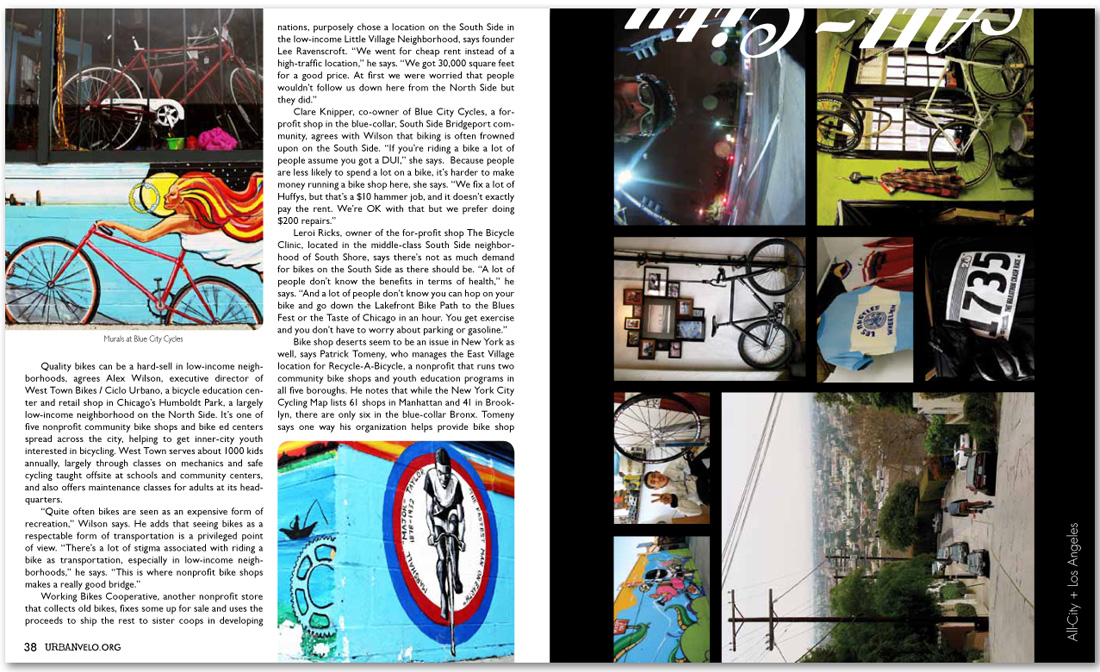


Quality bikes can be a hard-sell in low-income neighborhoods, agrees Alex Wilson, executive director of West Town Bikes / Ciclo Urbano, a bicycle education center and retail shop in Chicago’s Humboldt Park, a largely low-income neighborhood on the North Side. It’s one of five nonprofit community bike shops and bike ed centers spread across the city, helping to get inner-city youth interested in bicycling. West Town serves about 1000 kids annually, largely through classes on mechanics and safe cycling taught offsite at schools and community centers, and also offers maintenance classes for adults at its headquarters.
“Quite often bikes are seen as an expensive form of recreation,” Wilson says. He adds that seeing bikes as a respectable form of transportation is a privileged point of view. “There’s a lot of stigma associated with riding a bike as transportation, especially in low-income neighborhoods,” he says. “This is where nonprofit bike shops makes a really good bridge.”
Working Bikes Cooperative, another nonprofit store that collects old bikes, fixes some up for sale and uses the proceeds to ship the rest to sister coops in developing nations, purposely chose a location on the South Side in the low-income Little Village Neighborhood, says founder Lee Ravenscroft. “We went for cheap rent instead of a high-traffic location,” he says. “We got 30,000 square feet for a good price. At first we were worried that people wouldn’t follow us down here from the North Side but they did.”
Clare Knipper, co-owner of Blue City Cycles, a for-profit shop in the blue-collar, South Side Bridgeport community, agrees with Wilson that biking is often frowned upon on the South Side. “If you’re riding a bike a lot of people assume you got a DUI,” she says. Because people are less likely to spend a lot on a bike, it’s harder to make money running a bike shop here, she says. “We fix a lot of Huffys, but that’s a $10 hammer job, and it doesn’t exactly pay the rent. We’re OK with that but we prefer doing $200 repairs.”
Leroi Ricks, owner of the for-profit shop The Bicycle Clinic, located in the middle-class South Side neighborhood of South Shore, says there’s not as much demand for bikes on the South Side as there should be. “A lot of people don’t know the benefits in terms of health,” he says. “And a lot of people don’t know you can hop on your bike and go down the Lakefront Bike Path to the Blues Fest or the Taste of Chicago in an hour. You get exercise and you don’t have to worry about parking or gasoline.”
Bike shop deserts seem to be an issue in New York as well, says Patrick Tomeny, who manages the East Village location for Recycle-A-Bicycle, a nonprofit that runs two community bike shops and youth education programs in all five boroughs. He notes that while the New York City Cycling Map lists 61 shops in Manhattan and 41 in Brooklyn, there are only six in the blue-collar Bronx. Tomeny says one way his organization helps provide bike shop